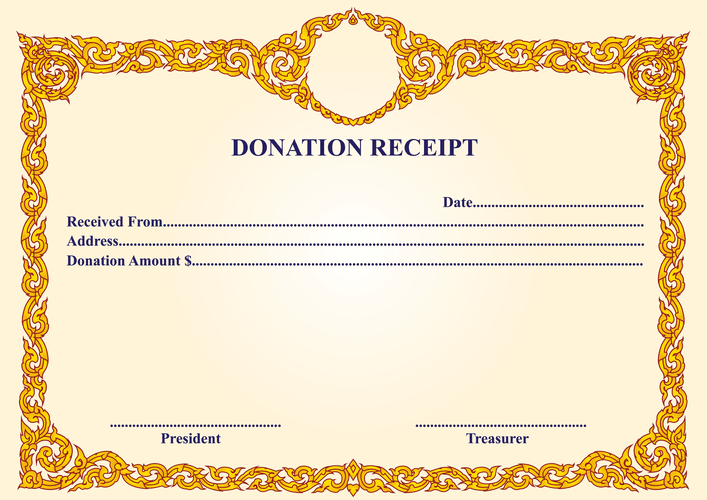Content
- Subtract Current Liabilities
- Net Working Capital Ratio
- Download A Free Copy Of “preparing Your Ap Department For The Future”, To Learn:
- Changes In The Net Working Capital Formula
- How To Pay Vat Online: The Ultimate Guide
- What Is Net Operating Working Capital?
- General Liability Vs Professional Liability: The Best Solution For Your Business

As for payables, the increase was likely caused by delayed payments to suppliers. Even though the payments will someday be required to be issued, the cash is in the possession of the company for the time being, which increases its liquidity.
- While net working capital is often used to measure liquidity, it can also be used to measure operational efficiency.
- A company has positive working capital if it has enough cash, accounts receivable and other liquid assets to cover its short-term obligations, such as accounts payable and short-term debt.
- Collections and payments are the elements of cash flow that have the most direct and immediate impact on net working capital.
- It’s an important indicator for how financially stable your business is in the short term.
- Changes in net working capital show trends in operating cash flow over a period of time.
- Current liabilities include accounts payable, taxes, wages and interest owed.
When this happens, it may be easier to calculate accounts receivables, inventory, and accounts payables by analyzing the past trend and estimating a future value. Working capital management is a strategy that requires monitoring a company’s current assets and liabilities to ensure its efficient operation.
Subtract Current Liabilities
The company has a claim or right to receive the financial benefit, and calculating working capital poses the hypothetical situation of the company liquidating all items below into cash. Positive working capital indicates that a company can fund its current operations and invest in future activities and growth. Get credit references and financial statements before accepting a large order. Even a COD is not safe if you invest your labor and material only to receive nothing in return.
Doesn’t an increase in net working capital mean you’ll have better future cash flows? It does when the current assets and liabilities really will be received in cash. This increase in working assets is permanent so it won’t be settled in cash in the next year. I’ll leave you with a banking tip that catches many growing businesses by surprise. As I hinted earlier, not all current assets will increase your cash in the next year. This can happen when increased sales drive increases in accounts receivable or inventory.
Net Working Capital Ratio
Since OWC reflects the management of resources in day-to-day operations, this calculation is useful in determining if a company can remain solvent. If, for example, a business has too little OWC, it risks not having sufficient funds to pay off outstanding liabilities.
- Net working capital ratio shows how much of a company’s current liability can be met with the company’s current assets.
- The company has more short-term debt than it has short-term resources.
- Accounts receivable are usually incurred when buyers pay a company for its products or services with credit.
- Also, it ensures that your shareholders earn a higher return for every dollar invested in your business.
We can give examples of current assets as sundry debtors, accounts receivables, inventories, prepaid salaries, etc. Long-term assets such as equipment and machinery are not considered current assets. If your company has unused long-term assets like old equipment, consider selling them for cash if those assets are still in good condition. Once you have determined both current assets and current liabilities, subtract the liabilities from the assets to determine net working capital. Net working capital is important because it gives an idea of a business’s liquidity and whether the company has enough money to cover its short-term obligations.
Download A Free Copy Of “preparing Your Ap Department For The Future”, To Learn:
An operating cycle, also referred to as a cash conversion cycle, is the time it takes the company to purchase inventory and convert it into cash receipts. This group of assets is referred to as current assets because they are either already in the form of cash or they can be converted to cash within the business year.

This balance sheet item is then removed from the list of working capital assets. To calculate a business’s net working capital, use the balance sheet to find the current assets and current liabilities. Essentially, it shows how much money or liquid assets your business has readily available to cover any current or immediate financial needs, like expenses or debts. It’s an important indicator for how financially stable your business is in the short term.
Changes In The Net Working Capital Formula
If your business’s net working capital is substantially positive, that’s a good sign you can meet your financial obligations in the future. If it’s substantially negative, that suggests your business can’t make its upcoming payments and might be in danger of bankruptcy. Working capital is important because it is necessary for businesses to remain solvent. In theory, a business could become bankrupt even if it is profitable. After all, a business cannot rely on paper profits to pay its bills—those bills need to be paid in cash readily in hand.

By removing long-term assets and liabilities, it is a good indicator as to whether a business can sustain itself and can remain financially solvent in the short term . Conversely, the metric can show whether its short-term liabilities are hindering the business’s ability to grow. Changes in net working capital show trends in operating cash flow over a period of time. The change in net working capital can show you if your short-term business assets are increasing or decreasing in relation to your short-term liabilities. Create subtotals for total non-cash current assets and total non-debtcurrent liabilities. Subtract the latter from the former to create a final total for net working capital. If the following will be valuable, create another line to calculate the increase or decrease of net working capital in the current period from the previous period.
How To Pay Vat Online: The Ultimate Guide
As you review your working capital needs while considering a sale, remember to keep running your business as usual. The buyer also discovers, in the business’s current liabilities, an accrued distribution. Because this distribution will still be paid out to the seller of the company and is not part of the normal expenses incurred to generate revenues, it is removed from the list of working capital liabilities.
- For best guesses, one must consider other financial ratios and compare the chosen company’s ratios with other companies’ values in the same industry.
- Outside of academia, Julius is a CFO consultant and financial business partner for companies that need strategic and senior-level advisory services that help grow their companies and become more profitable.
- Notice in the example above, it takes two years of earnings to create enough cash to cover the increase in working capital.
- In reality, you want to compare ratios across different time periods of data to see if the net working capital ratio is rising or falling.
- If, for example, a business has too little OWC, it risks not having sufficient funds to pay off outstanding liabilities.
In this example, the net working capital formula is $600,000 of current assets less the $350,000 of current liabilities for a net working capital of $250,000. Usually the balance sheet will record current assets separately from other long-term assets or fixed assets, if applicable. Net Working Capitalmeans all current assets of the Company and its Subsidiaries, minus all current liabilities of the Company and its Subsidiaries, except current liabilities included in Indebtedness. Working capital includes only current assets, which have a high degree of liquidity — they can be converted into cash relatively quickly.
My hope is to help you maintain a healthy net working capital formula and working capital ratio to avoid the stress of a cash crunch. Earnings in the first year of increased sales may cover part of the permanent increase in working capital. The short answer is that it’s only a temporary solution because you’ll need to pay back the short-term loan by one of the three methods just mentioned.
What Is Net Operating Working Capital?
We do not provide any legal, tax, personal financial planning, or investment advice. CFO Perspective, LLC assumes no responsibility for errors or omissions in the contents on the site. THE USE OR RELIANCE OF ANY INFORMATION CONTAINED ON THIS SITE IS SOLELY AT YOUR OWN RISK.
Depending on the analyst, there are slightly different definitions of current assets and current liabilities. Some analysts may exclude cash and debt from the calculation, while others include those figures in their measurements. Net working capital represents the cash and other current assets—after covering liabilities—that a company has to invest in operating and growing its business. In other words, it represents that funds an entity has to cover short-term obligations, such as payroll, rent, and utility bills. Therefore, assuming that the net working capital is positive (i.e. current assets are greater than current liabilities), the business is likely to be able to generate enough cash to pay these current liabilities. In case the net working capital is negative, the business may have to tap other sources of funding to pay back near-term obligations. Operating working capital is a narrower measure than net working capital.
For example, if a company has a strong working capital position, it may be able to take advantage of a supplier’s offer to extend terms from 30 days to 60 days. When it comes to business finance, the terms “working capital” and “net working capital” are often used interchangeably. Working capital is a measure of a company’s short-term liquidity, while net working capital is a measure of a company’s overall liquidity. If revenue declines and the company experiences negative cash flow as a result, it will draw down its working capital. Investing in increased production may also result in a decrease in working capital. Like many things in M&A, at the surface level, it would appear to be a straightforward calculation to determine how much working capital should be left in the business. However, there are often many nuances to be considered to ensure a fair result for both the buyer and seller.
Paul has authored numerous articles and is a frequent speaker at industry events. He received his BBA https://www.bookstime.com/ in finance from the University of Iowa and graduated from Northwestern University School of Law.
What Are Examples Of Current Assets?
Operating working capital focuses more on day-to-day operations, whereas net working capital looks at all assets and liabilities. Net working capital is more comprehensive because it represents the cash and other current assets a company has to invest in operating and growing its business. High and low OWC show how efficiently a company is using and managing funds. A high OWC usually means that a company has less cash because it was used to fund its operating cycle. Thus, Net Working Capital aims to provide funds to finance your current assets by current liabilities.
Extended Example Of Net Working Capital Ratio
An excessive Net Working Capital indicates that more funds are kept idle for a long period of time. Strong Net Working Capital Position gives an opportunity to your firm to avail cash discounts. Thus, it is important to calculate changes in the Net Working Capital. This is to ensure that your business maintains a sufficient amount of Net Working Capital in each accounting period. Such an optimal level of Net Working Capital ensures that your business is neither running out of funds. This means this amount is sufficient to pay off the current liabilities.
Brainyard delivers data-driven insights and expert advice to help businesses discover, interpret and act on emerging opportunities and trends. For over 30 years, Software Equity group has provided unparalleled software M&A advisory services for emerging and established software companies. Don’t hesitate to reach out if you are preparing to sell your business and would like to learn more about the factors that matter most to improving the value of your company. If a business is affected by seasonality, a longer period could be the best indicator of the amount needed for working capital to even it out, or you might adjust for the distortions from seasonal trends. Alternatively, a shorter period may be appropriate if the business trajectory has changed dramatically just prior to the deal closing. NWC is important for M&A because it highlights whether or not you have enough to cover your business’ debts – and can influence how easily the M&A transaction is able to take place . Get instant access to video lessons taught by experienced investment bankers.
That equation is actually used to determine working capital, not the net working capital ratio. An adequate amount of Net Working Capital would ensure that you earn a higher return on the amount invested in your current assets.
When your company needs immediate cash, you may have other options that I list next. The Net Working Capital formula is a good estimate for your future cash flow, but nothing is as good as a cash flow projection. Check out my article on how to create a cash flow projection for more information.



























